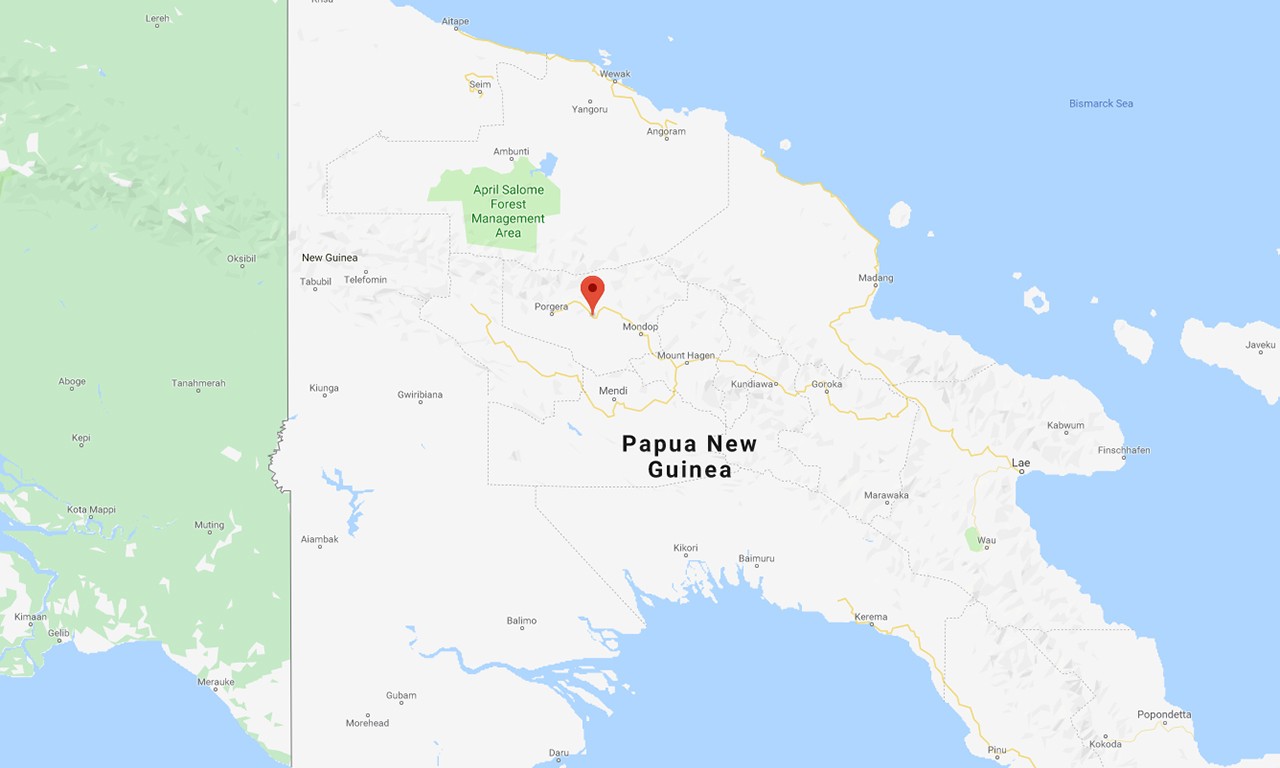 |
Marsupial Figure, 1500 BCE-1600 CE
Laiagam Valley, Central Enga Province, Papua New Guinea, Melanesia
Stone; 3 1/2 × 3 1/2 × 7 1/2 in.
2019.8.1
Bowers Museum Purchase |
Set in Stone
When it comes to the art of Papua New Guinea, very few things are literally set in stone. Bags are made from fiber or coir, shields and clubs from wood, ornaments from feathers and other organic material, vessels from clay and so on. Beautiful as these objects are, their organic nature tends to give them relatively short lives. Stone objects like this rare Papuan lithic survive quite a bit longer. Cast in proper light, the eroded curves of this figure from Papua New Guinea’s Enga Province emerge as the stylized features of a marsupial but do not bely its mysterious function. This post looks at some of the theories on the purpose of the stone as well as its design, discovery and an interesting note on its date.
 |
| Photograph of a cuscus taken on November 15, 2004 by Peter Keller near Agats in Indonesia's West Papua Province. |
A Charm Most Charming
Unless a stone object has an evident function based on its form, it can be difficult to determine how it was originally used. In general, three types of decorated stone objects have been found in the Enga region. The first two of these are mortars and pestles. Mortars tend to be less decorated, sometimes having geometric designs or faces carved into their curved sides. By contrast, pestles are significantly more complex featuring bird or echidna effigies above sturdy, semi-spherical grinding surfaces. This stone figure constitutes a third unknown object type with an unknown function. These objects are almost always zoomorphic, representing endemic Papuan mammals and birds. The wear this stone has received makes it difficult to determine beyond a doubt, but this figure represents some marsupial. Based on the shape of the limbs, snout and the prominently protruding eyes this is almost certainly a cuscus, the world’s largest species of opossum. In terms of usage the best guess of experts is that that the marsupial figure was either a clan totem of one of the early Enga peoples, that it was used in rituals or that it was kept as a hunting charm despite its large size.

 |
Line drawing of a similar Enga Province stone figure from Pamela Swadling's "Prehistoric stone artefacts from Enga and
the implication of links between the highlands, lowlands and islands for early agriculture in Papua New Guinea." |
You’ve Come a Long Way, Cuscus
The variety within Papuan lithics is both diverse and surprisingly consistent across large swaths of the New Guinean highlands. Of course, the regional differences seen in the shape and varied animal motifs used in these stone objects are explained far more easily that the similarities spanning hundreds of miles of difficult-to-traverse land. There are a few theories which seek to explain the consistency of some of these forms. The strongest theory is that the transmission of these objects took place along ancient watersheds. This explains why an object might look more like one from a dig site 50 miles away than it does from one from the valley over. Only one other almost identical Enga Province object has been found and it now resides in the prestigious Jolika Collection of Oceanic Art.
 |
| Laiagam Valley, Enga Province, Papua New Guinea, Melanesia |
The Road Less Made
This statuette was rediscovered as a direct result of construction work. Due to the relative lack of largescale construction projects in Papua New Guinea prior to the 1960s, most of these lithics in western collections were found during the early 1960s. During this period a British firm named Dowsett Engineering Construction Ltd. was given the commission for several infrastructure projects in Papua New Guinea’s Enga Province. The company was responsible for a lot of the road construction in the region and may have been contracted to build the province’s Wapenamanda Airport. In in 1962 and 1963 an engineer named Ron Ingle was working on these projects and due to his interest in both the local culture and geology was given this stone when it was unturned during excavation. The objects were predominantly found in other ways too. Most these stone objects are dug up as part of regular home construction and garden digging by Enga Province locals.
 |
| Alternate view of 2019.8.1 |
Dating a Marsupial
There is no dating process for effectively testing the age of unfired stone. Carbon-14 dating tests work well on plant matter by comparing the content of a radioactive isotope of carbon against a standard data plot. Essentially this test checks to see the last time a plant “breathed” carbon. Thermoluminescence tests radioactive decay since the last time an object was superheated and works well for testing the age of ceramics. Despite being made of stone, though, these lithics from Papua New Guinea actually do have an upper bound on their age, the result of a rather unfortunate accident. While on loan to a museum in France a mortar from the Ambum Valley was accidentally dropped and cracked in several places. This opened a preexisting fissure in the stone which was found to contain organic material that could be carbon dated. Since the organic material could only have grown there after the object was made, we now know that these lithics were made up to and possibly prior to 3500 years ago. This means that these stone animal figures are the oldest known sculptural objects in Oceania.
Text and images may be under copyright. Please contact Collection Department for permission to use. References are available on request. Information subject to change upon further research.






Comments